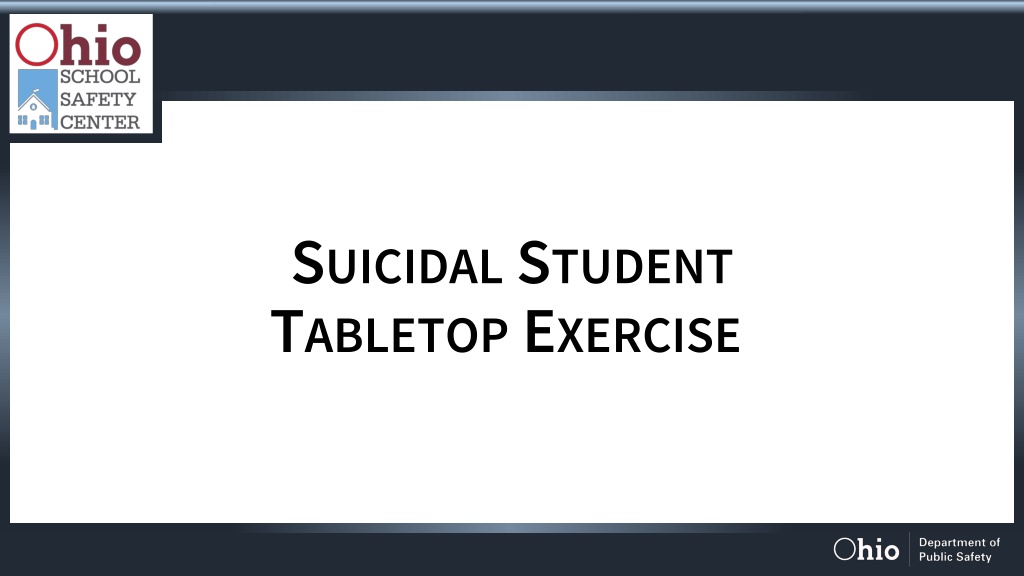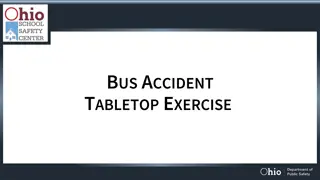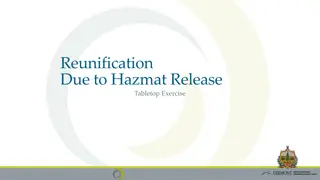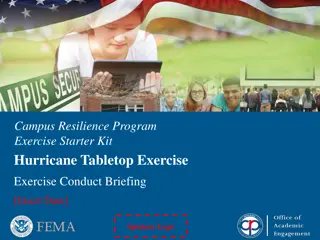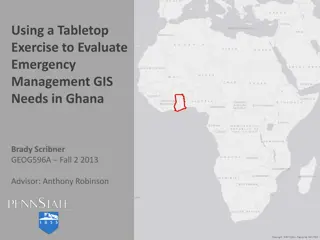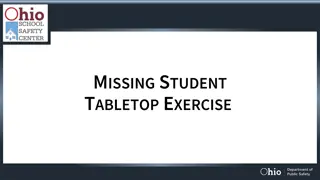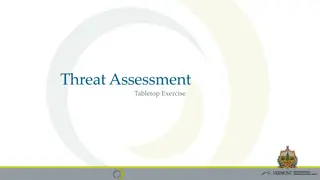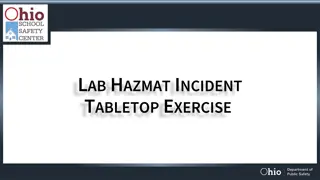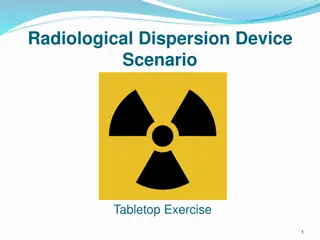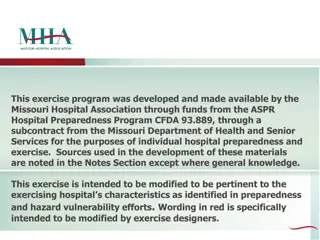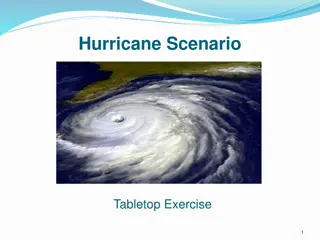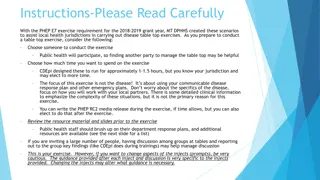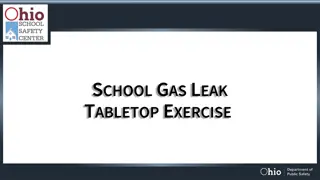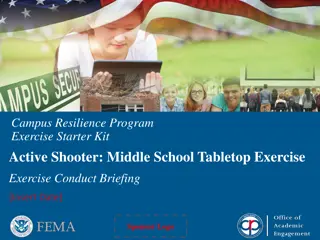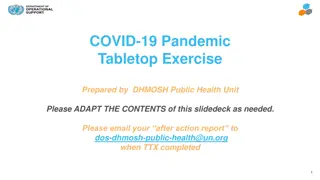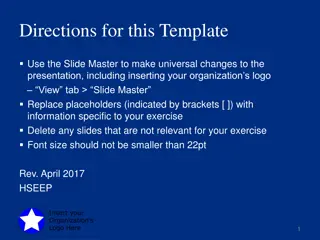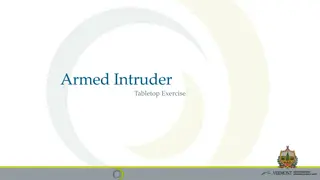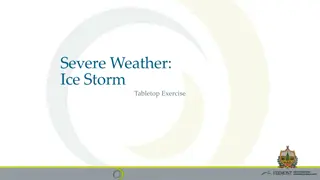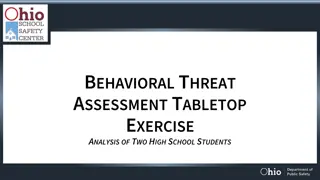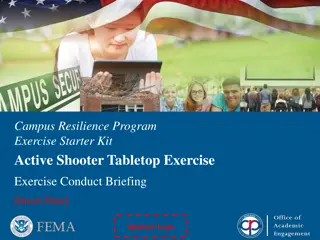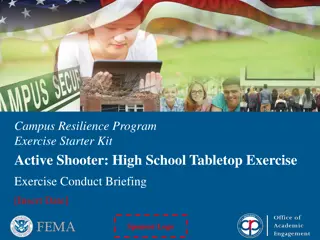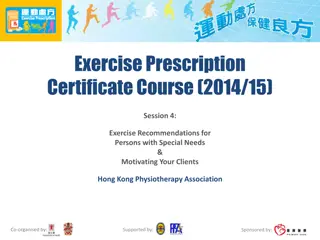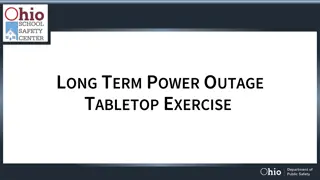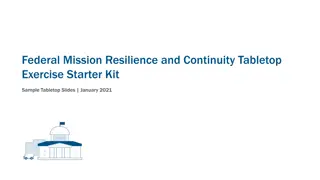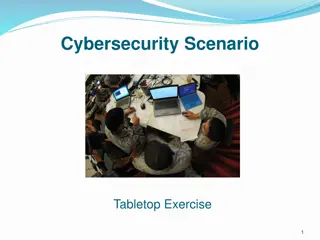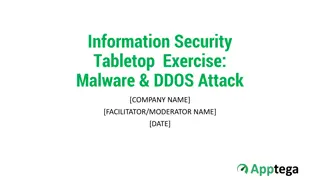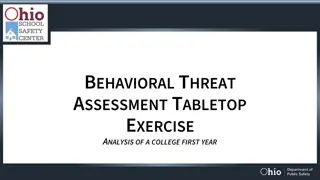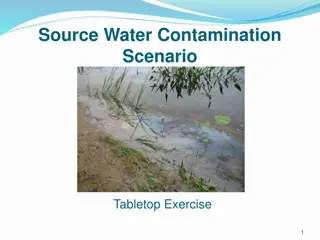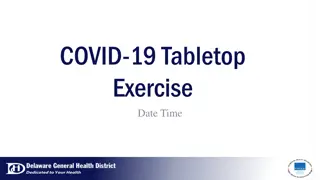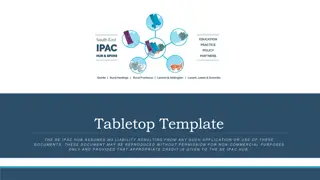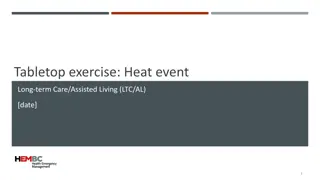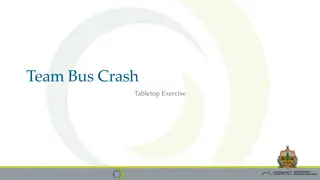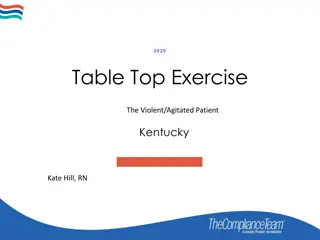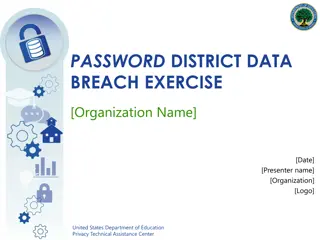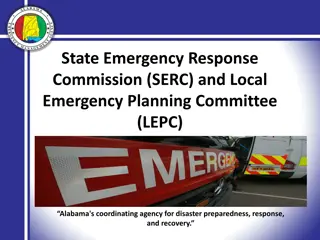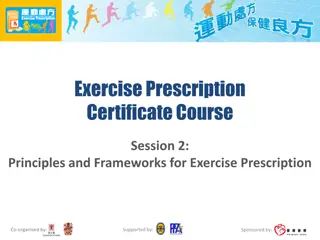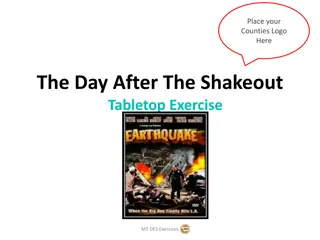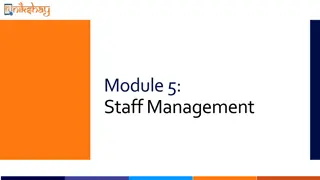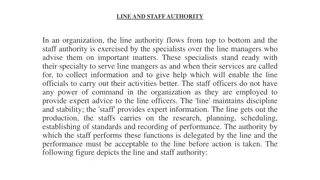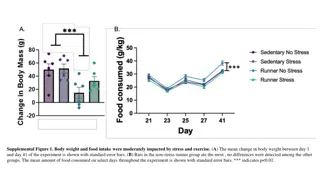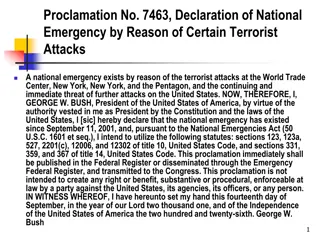Emergency Management Tabletop Exercise for School Staff
This tabletop exercise focuses on enhancing emergency management awareness and preparedness among school staff and administrators. It includes various scenarios and discussions to validate plans, rehearse responses, and identify areas for improvement. The exercise aims to update policies and procedures to effectively prevent, mitigate, respond to, and recover from potential incidents within a school setting.
Download Presentation

Please find below an Image/Link to download the presentation.
The content on the website is provided AS IS for your information and personal use only. It may not be sold, licensed, or shared on other websites without obtaining consent from the author. Download presentation by click this link. If you encounter any issues during the download, it is possible that the publisher has removed the file from their server.
E N D
Presentation Transcript
SUICIDALSTUDENT TABLETOP EXERCISE
SUICIDAL STUDENT TABLETOP EXERCISE Welcome & Introductions SLIDE 2
ADMINISTRATION 1. Registration 2. Exits and Restrooms 3. Emergency Evacuation 4. Cell Phones 5. Questions SLIDE 3
INTRODUCTION 1. Who are you? 2. What agency are you from? 3. What is your role today? SLIDE 4
SCHEDULE 2:00 Registration 2:15 Welcome and Introductions 2:30 Purpose and Objectives 2:45* Scenario 3:15 After Action Report 3:30 Questions to Consider 3:45 What did you Discover? 4:00 End of Exercise * 10 minute break included at the end of the Scenario The entire process is designed to be completed in 2 hours SLIDE 5
TABLETOP EXERCISE The most basic emergency management test is a tabletop exercise. Typically, this exercise happens in an informal setting. The intent is to discuss various issues regarding a hypothetical, simulated emergency. Tabletop exercises enhance general awareness, validate plans and procedures, and rehearse potential situations. Additionally, they assess the systems your school needs to prevent, mitigate, respond and recover during a defined incident. Tabletop exercises facilitate conceptual understanding, identify strengths and areas for improvement, and/or achieve changes in attitudes. SLIDE 6
ROLESAND RESPONSIBILITIES Players Represent your agency & discuss your planned response to the scenario Facilitators Moderate the flow of discussion. Keep the tabletop exercise moving and on-track Evaluators Record strengths, note areas of improvement, and capture lessons learned Observers Gain insight from the exercise. Refrain from interjecting during the exercise & be respectful SLIDE 7
THE PURPOSE 1. Increase awareness and develop an if-then mindset for school staff, and administrators. 2. Determine if current policy, procedure and practice is adequate for the exercise incident. 3. Facilitate updating the school policy and procedure for incidents that might happen. SLIDE 8
OBJECTIVES Review the Emergency Operation Plan for your school during the exercise for areas for improvement. Review your injury/health emergency response policy during the exercise for areas for improvement. Review your lockdown policy during the exercise for areas for improvement. If you school does not have a comprehensive suicide prevention program, please visit https://suicideprevention.ohio.gov/Schools/Middle-and-High-School for resources to create one. It has tools to help a school understand what to do. SLIDE 9
SCENARIO: SUICIDAL STUDENT It is Tuesday at 10:40 AM. It is a sunny spring day on a 65-degree day. SLIDE 10
SCENARIO CONTINUES The school office is notified that a substitute teacher needs help with a disruptive student. The substitute teacher is on her first day and the student has a known and documented history of defiance. An administrator responds to the 4th floor classroom to assist and finds the class and the substitute teacher in the hallway highly anxious. The substitute teacher informs you that the student has found an unlocked window and has climbed out onto a ledge overlooking the parking lot and is threatening to jump if anyone attempts to make contact. What steps do you take? SLIDE 11
SCENARIO CONTINUES What will you do for the students in the hallway? What will you do for the upset student? What are the steps in returning students into the classroom? What other considerations are needed? SLIDE 12
AFTER ACTION REPORT A review of your response to the incident should be completed as a part of the process. This is called an "after-action report". Answer the questions below. Is your response adequate for the scope of the incident? Does the response fall within your current policy and procedure? If the answer is no should the policy/procedure be updated? If a change is needed, who will facilitate the change? What is the timeline to update the policy/procedure? SLIDE 13
CONTINUED QUESTIONSTO CONSIDER Is your response reasonable? Is it realistic; can it be carried out operationally? Are all those involved in the response aware of their roles? Are they trained and available? Do you have a current Memorandum of Understanding (MOU) or do you need to update it? (Law Enforcement, EMS, Mental Health, Grief Counselors, etc.) Was communication adequate during the response? Were the appropriate people notified? SLIDE 14
CONTINUED QUESTIONSTO CONSIDER Are there Public Relations concerns in the scenario? Are they adequately addressed in your response? Can an operational change be made to mitigate or prevent a future occurrence of this type of incident? Be aware that your answers to these questions will drive the improvement process for your Emergency Operations Plans. SLIDE 15
WHAT DID YOU DISCOVER? What did you discover during your After-Action Review? Does any part of your emergency plan need to be updated based on what you ve learned? Do any systems, equipment or practices need to be updated? Is additional training warranted to facilitate the proper execution of this response? Are additional resources needed to complete the response successfully? If any of the answers to the above questions are, "yes", identify who will be responsible and what is the timeline to make the changes identified. SLIDE 16
JOINTHE SAFER OHIO SCHOOL TIP LINE The information is received by analysts in Ohio Homeland Security The Ohio School Safety Center and Ohio Department of Education work in partnership to disseminate the information and provide resources to affected schools and law enforcement agencies Registration is simple and easy Registration is completed via the Ohio School Safety Center webpage Marketing materials provided by the Ohio School Safety Center, ordered through our webpage Find out more about Anonymous Reporting via the Ohio School Safety Center webpage 844 SAFEROH (844-723-3764) Free 24/7 Anonymous Reporting System SLIDE 17
THANK YOU! Please remember that schools must complete a functional, full-scale, and tabletop exercise during the three-year period between resubmission of an annual emergency operation plan, and each type of test can only be used once. Sample tabletop exercise tool kits are available on the Ohio School Safety Center Website. Please engage your school safety team when planning your test. After completion, don't forget to document the test and after-action report in OH|ID. Step-by-step instructions for submitting your after-action report can be found here. SLIDE 18
